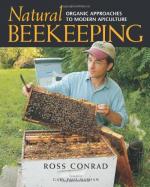|
This section contains 955 words (approx. 4 pages at 300 words per page) |

|
Apiculture is the science of beekeeping. Humans have collected honey from wild bee hives for more than 8,000 years, as shown in Mesolithic rock paintings dating from 6000 B. C. E. By 2500 B. C. E. , Egyptians were keeping bees in artificial hives. Hives exploit the honeybees' natural tendency to build nests in cavities, and allow apiculturalists to easily move (via boat, wagon, truck) and manipulate bee colonies. This mobility has allowed beekeepers to introduce honeybees around the world: The first hives were brought to the New World in the 1620s by European settlers.
Primitive hives were made of hollow logs, holes built in mud walls, or cones of mud, earthenware, or thatch. A modern apiary hive is a series of stacked boxes. The bottom box serves as the brood chamber where larvae develop; the upper boxes provide a space to store honey. Each box contains eight to twelve frames, which...
|
This section contains 955 words (approx. 4 pages at 300 words per page) |

|


